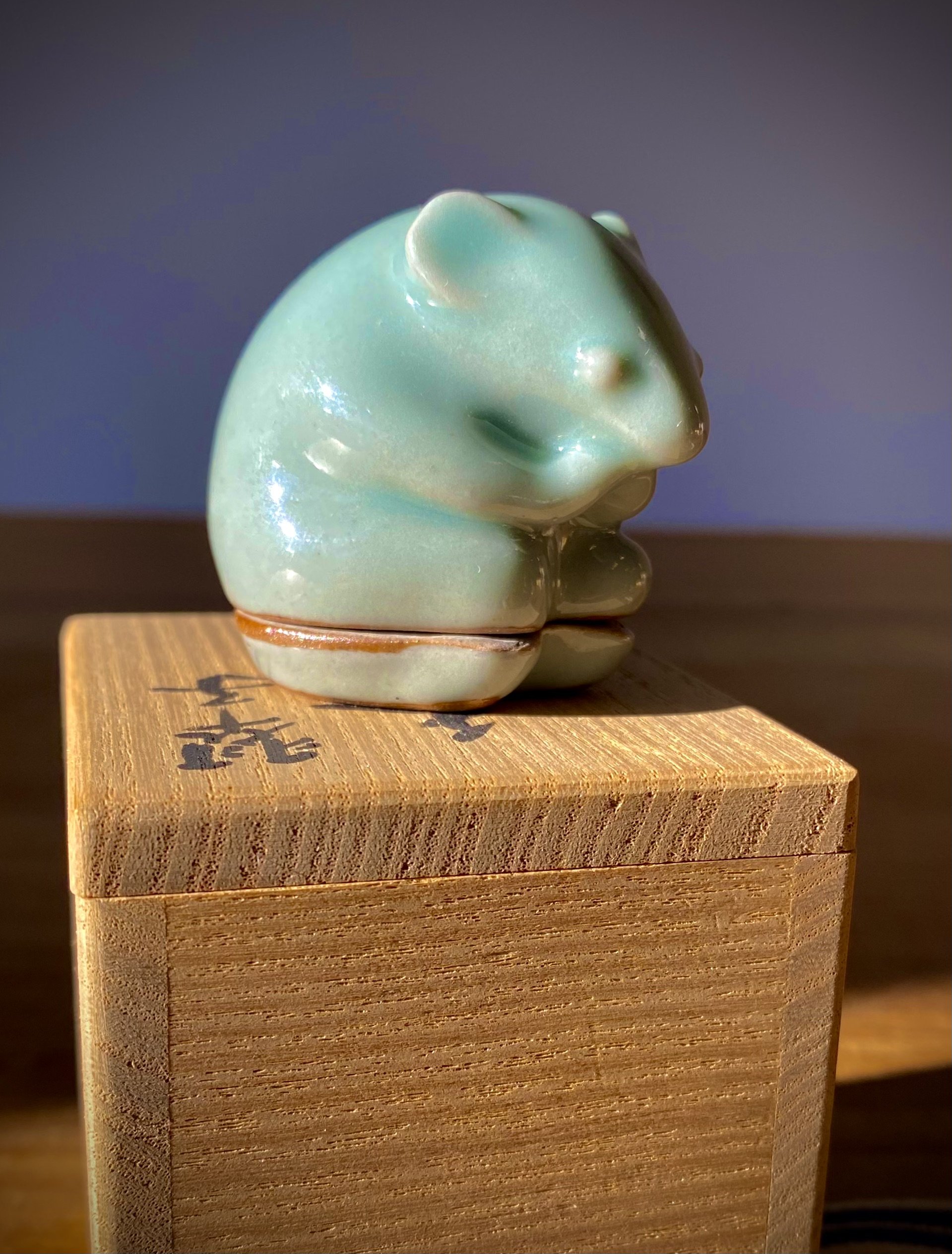 Image 1 of 8
Image 1 of 8

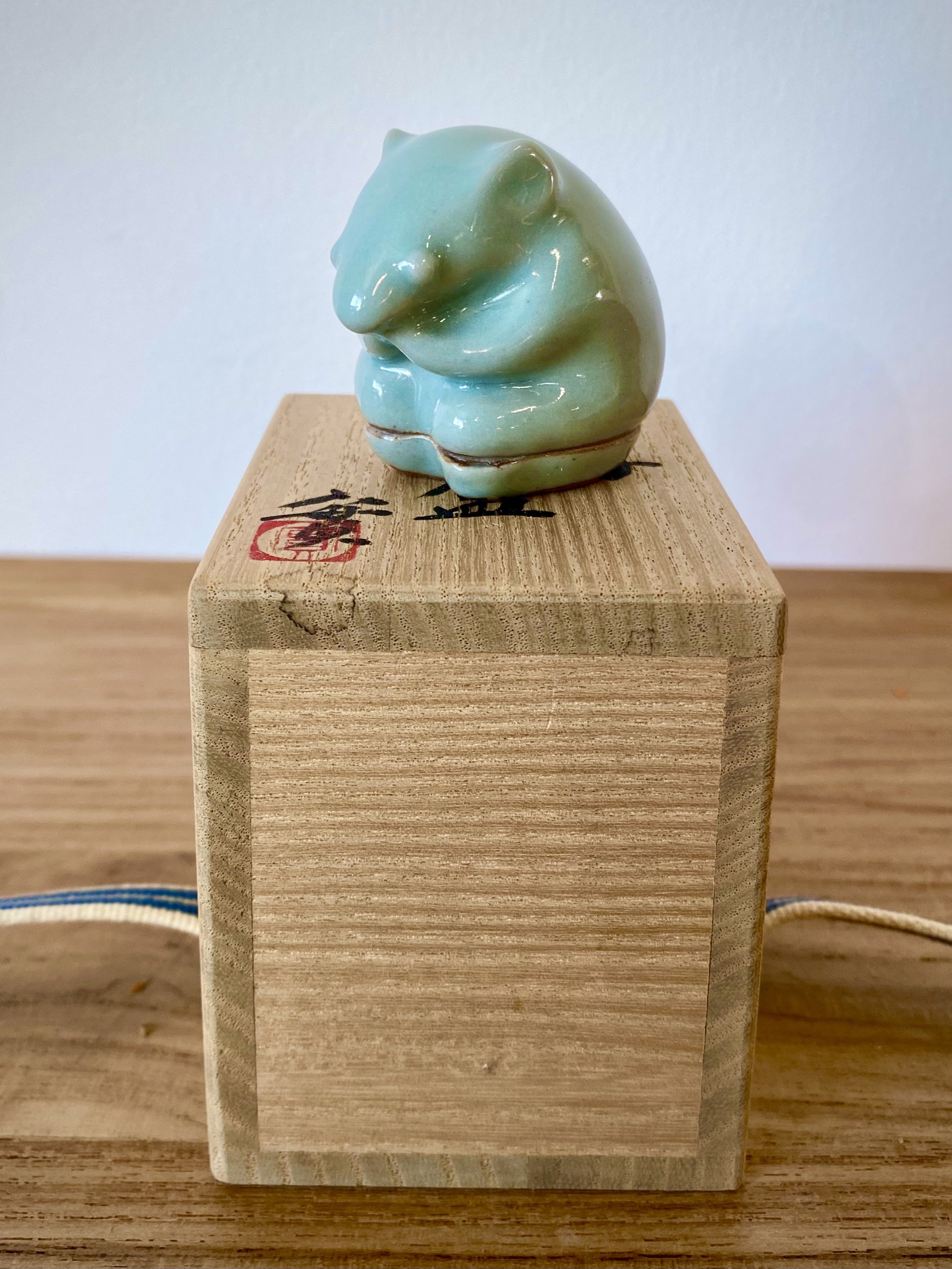 Image 2 of 8
Image 2 of 8

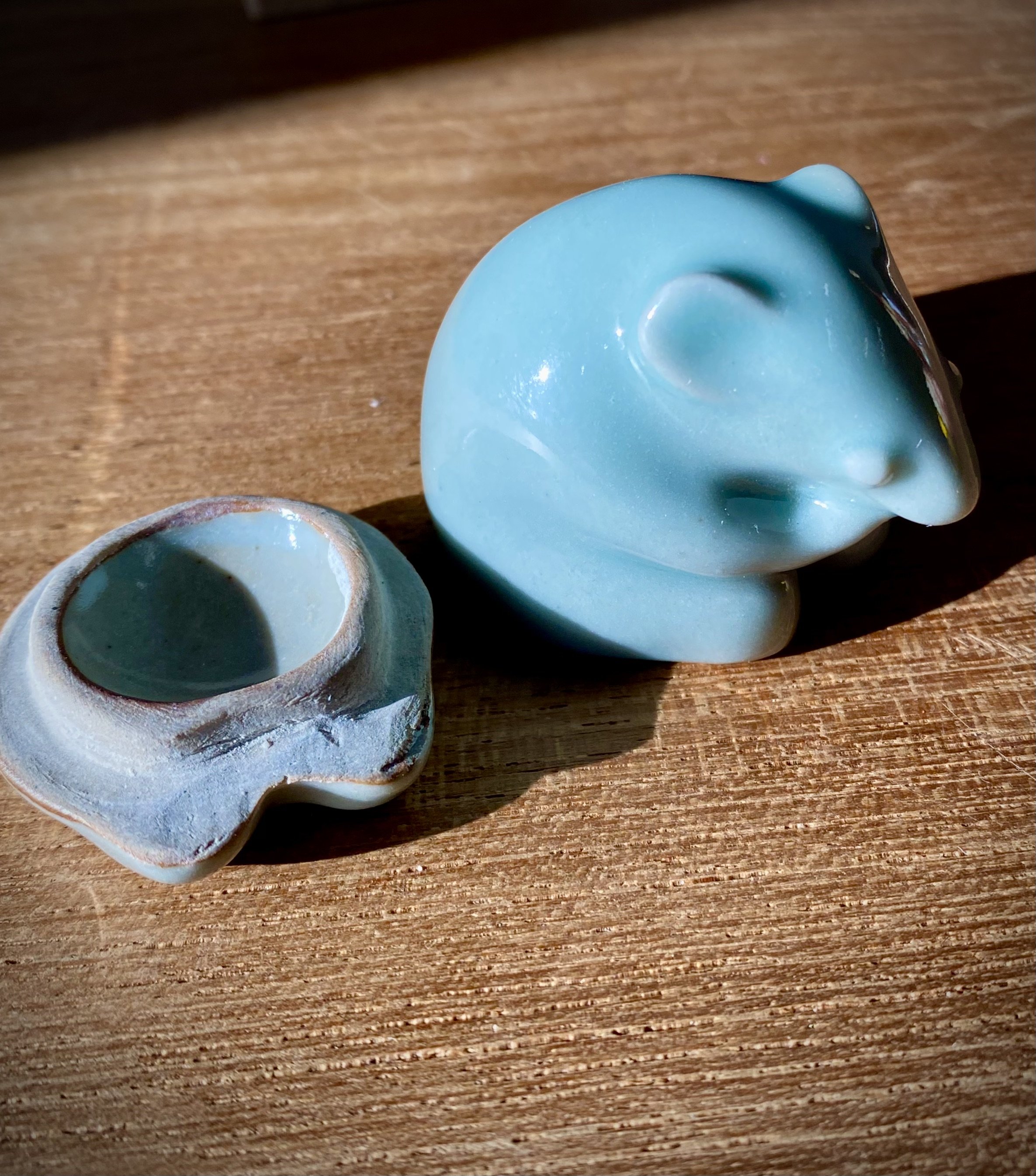 Image 3 of 8
Image 3 of 8

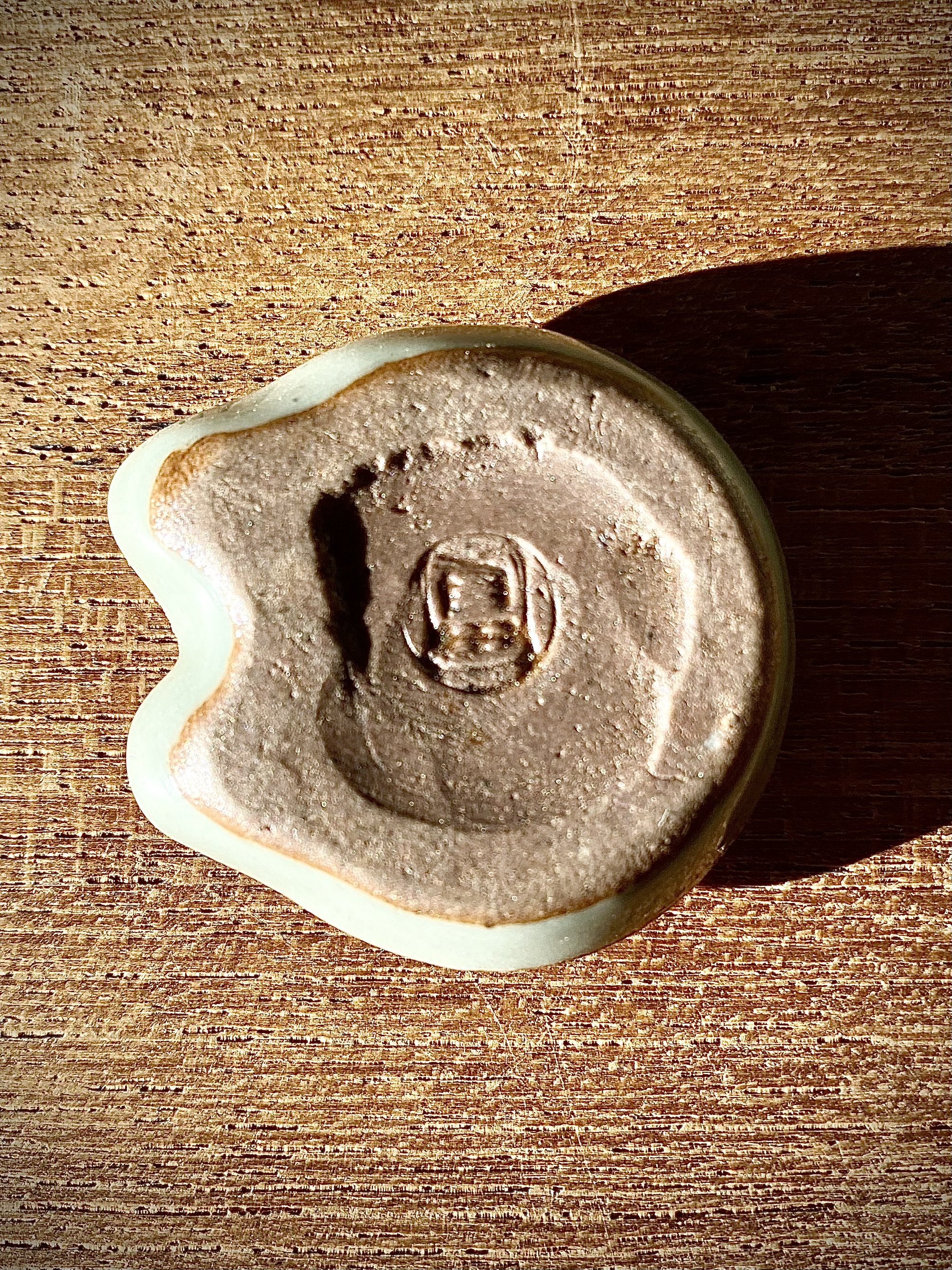 Image 4 of 8
Image 4 of 8

 Image 5 of 8
Image 5 of 8

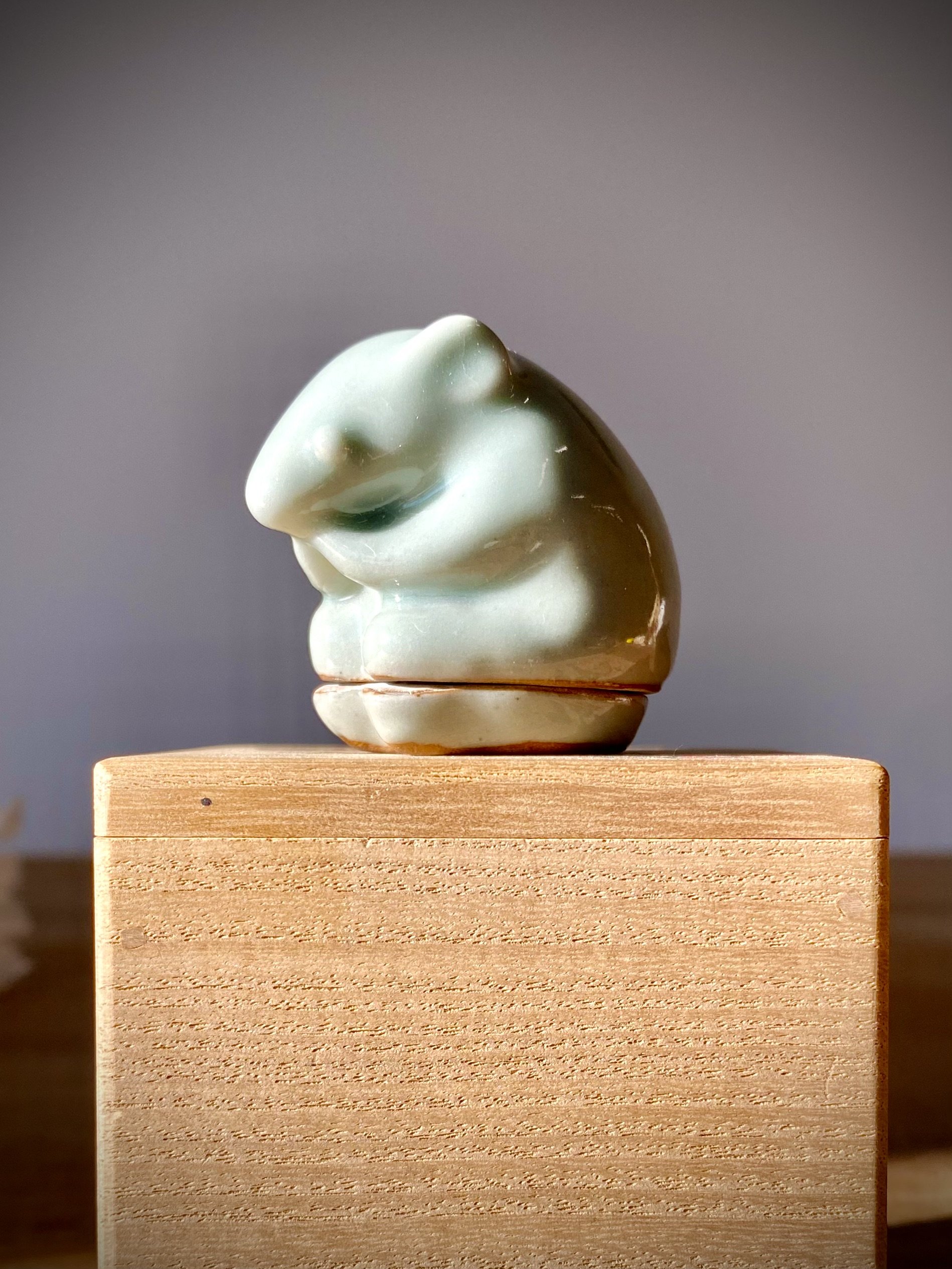 Image 6 of 8
Image 6 of 8

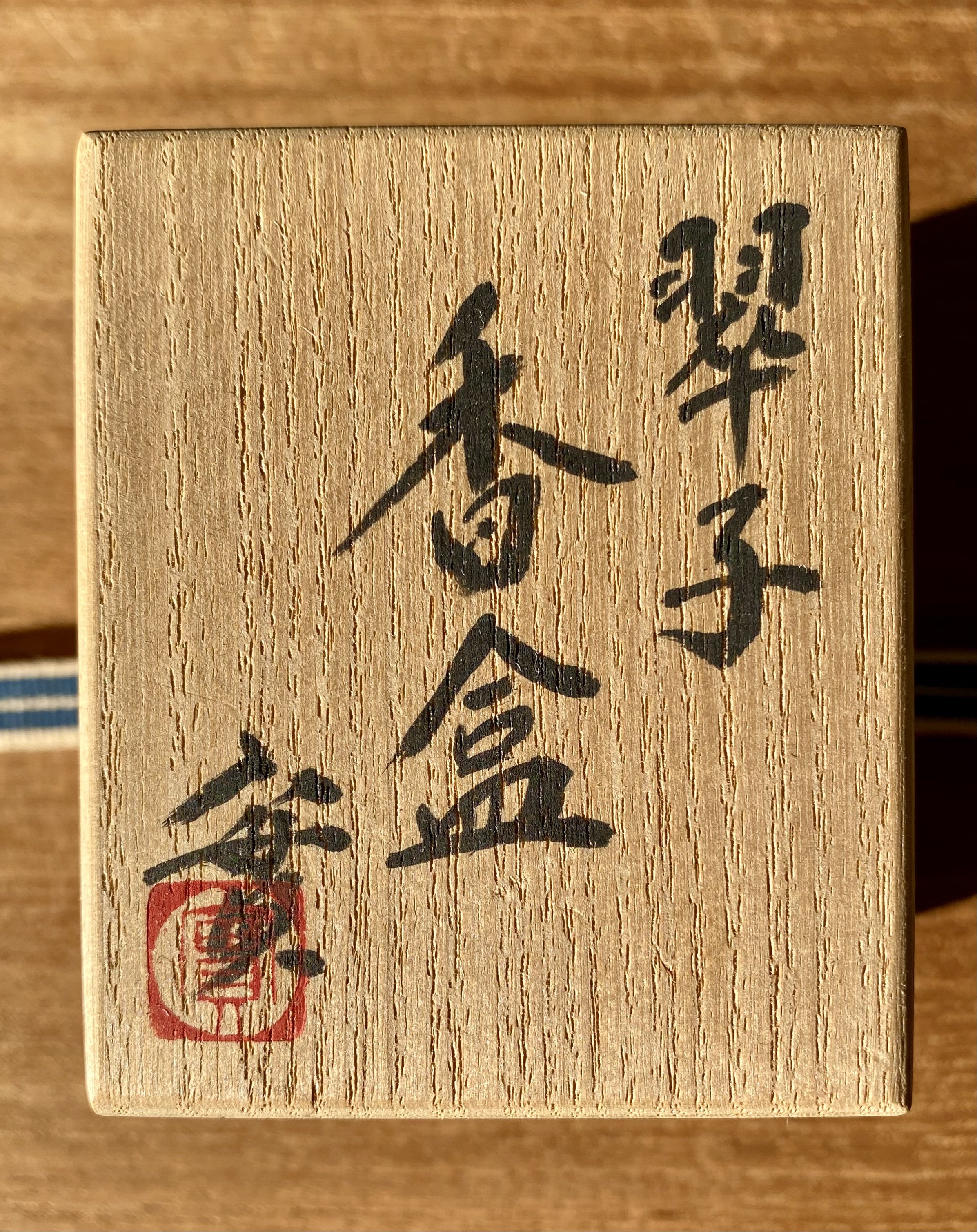 Image 7 of 8
Image 7 of 8

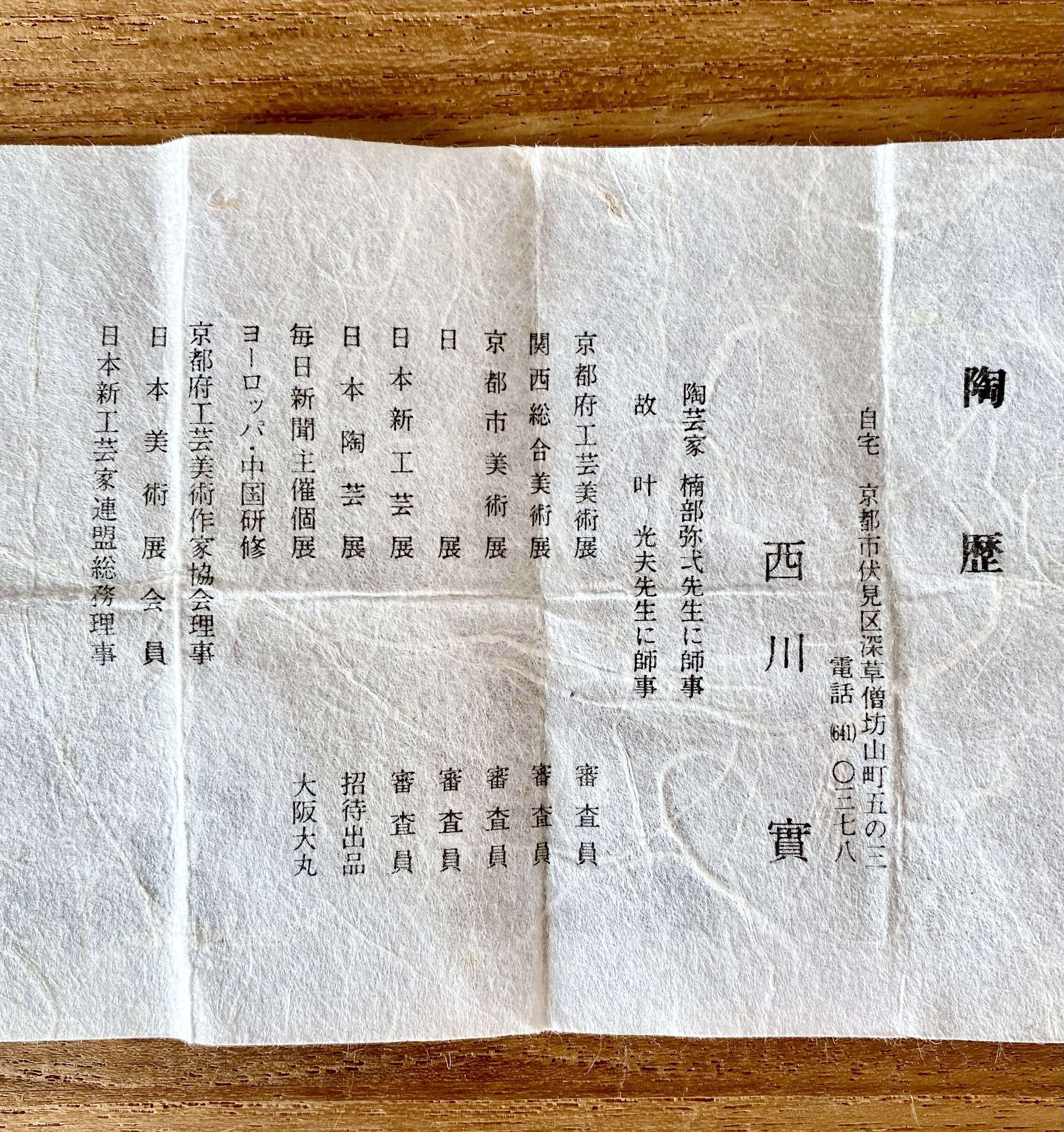 Image 8 of 8
Image 8 of 8









Kyoto Kogo Incense Box
Japanese incense holder or kōgō (香合) in the form of a mouse, by Kyoto potter Tao Zhen. The Japanese fascination with incense (kō, 香) began as early as the 6th century, when it was introduced from China, as part of Buddhist ceremonies. It culminated in the Kōdō, or "Way of Incense" (香道), one of the classical arts of refinement (along with the tea ceremony and ikebana). Small kōgō such as this are also used in the tea ceremony itself, as a way of cleansing and sanctifying the ceremonial space. The use of incense declined after the Meiji era, with the adoption of Western ways — but it has since come roaring back! Once reserved for altars and the aristocracy, incense has become ubiquitous in modern Japan.
This kōgō comes with its own cedar wood box, secured by a woven ribbon. Also, a paper describing the artist's many bone fides. Tao Zhen was a student of prominent ceramicists Yashiro Kusube and Mitsuo Kana, studied in Europe and China, has participated in numerous prestigious exhibitions, and is a Director of the Japan New Craftsmen's Association.
Japanese incense holder or kōgō (香合) in the form of a mouse, by Kyoto potter Tao Zhen. The Japanese fascination with incense (kō, 香) began as early as the 6th century, when it was introduced from China, as part of Buddhist ceremonies. It culminated in the Kōdō, or "Way of Incense" (香道), one of the classical arts of refinement (along with the tea ceremony and ikebana). Small kōgō such as this are also used in the tea ceremony itself, as a way of cleansing and sanctifying the ceremonial space. The use of incense declined after the Meiji era, with the adoption of Western ways — but it has since come roaring back! Once reserved for altars and the aristocracy, incense has become ubiquitous in modern Japan.
This kōgō comes with its own cedar wood box, secured by a woven ribbon. Also, a paper describing the artist's many bone fides. Tao Zhen was a student of prominent ceramicists Yashiro Kusube and Mitsuo Kana, studied in Europe and China, has participated in numerous prestigious exhibitions, and is a Director of the Japan New Craftsmen's Association.
Japanese incense holder or kōgō (香合) in the form of a mouse, by Kyoto potter Tao Zhen. The Japanese fascination with incense (kō, 香) began as early as the 6th century, when it was introduced from China, as part of Buddhist ceremonies. It culminated in the Kōdō, or "Way of Incense" (香道), one of the classical arts of refinement (along with the tea ceremony and ikebana). Small kōgō such as this are also used in the tea ceremony itself, as a way of cleansing and sanctifying the ceremonial space. The use of incense declined after the Meiji era, with the adoption of Western ways — but it has since come roaring back! Once reserved for altars and the aristocracy, incense has become ubiquitous in modern Japan.
This kōgō comes with its own cedar wood box, secured by a woven ribbon. Also, a paper describing the artist's many bone fides. Tao Zhen was a student of prominent ceramicists Yashiro Kusube and Mitsuo Kana, studied in Europe and China, has participated in numerous prestigious exhibitions, and is a Director of the Japan New Craftsmen's Association.